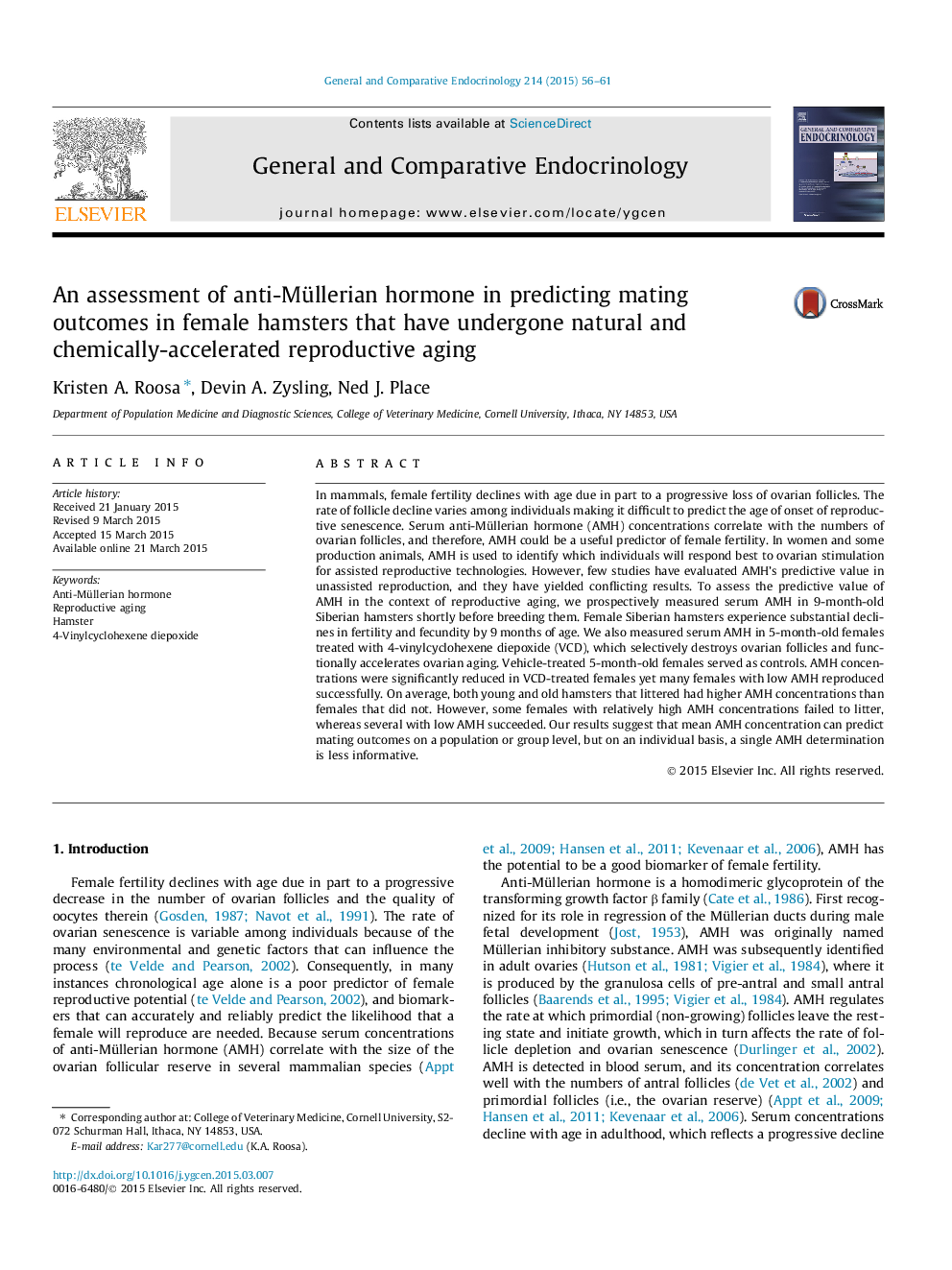| Article ID | Journal | Published Year | Pages | File Type |
|---|---|---|---|---|
| 2799976 | General and Comparative Endocrinology | 2015 | 6 Pages |
•As a group, hamsters that littered had greater mean serum AMH than those that did not.•At the group level, serum AMH may be predictive of mating outcomes.•Serum AMH had limited value in predicting mating outcomes in individual hamsters.•Chemical acceleration of ovarian aging reduced serum AMH.•Many treated females had very low serum AMH, yet remained fertile.
In mammals, female fertility declines with age due in part to a progressive loss of ovarian follicles. The rate of follicle decline varies among individuals making it difficult to predict the age of onset of reproductive senescence. Serum anti-Müllerian hormone (AMH) concentrations correlate with the numbers of ovarian follicles, and therefore, AMH could be a useful predictor of female fertility. In women and some production animals, AMH is used to identify which individuals will respond best to ovarian stimulation for assisted reproductive technologies. However, few studies have evaluated AMH’s predictive value in unassisted reproduction, and they have yielded conflicting results. To assess the predictive value of AMH in the context of reproductive aging, we prospectively measured serum AMH in 9-month-old Siberian hamsters shortly before breeding them. Female Siberian hamsters experience substantial declines in fertility and fecundity by 9 months of age. We also measured serum AMH in 5-month-old females treated with 4-vinylcyclohexene diepoxide (VCD), which selectively destroys ovarian follicles and functionally accelerates ovarian aging. Vehicle-treated 5-month-old females served as controls. AMH concentrations were significantly reduced in VCD-treated females yet many females with low AMH reproduced successfully. On average, both young and old hamsters that littered had higher AMH concentrations than females that did not. However, some females with relatively high AMH concentrations failed to litter, whereas several with low AMH succeeded. Our results suggest that mean AMH concentration can predict mating outcomes on a population or group level, but on an individual basis, a single AMH determination is less informative.
